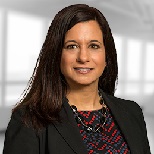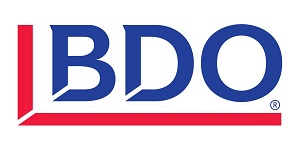
 Special to the Philanthropy Journal
Special to the Philanthropy Journal
By Laurie De Armond and Adam Cole
Nonprofit organizations are uniquely shaped by their mission, history, size, program goals, and community. But leaders of these organizations—whether a CFO at a global health services charity, a CIO of an education endowment, or the executive director at a museum—share a common goal of advancing their organization’s mission. To drive forward progress, it’s essential that leaders understand where their organization sits in relation to its peers on objective measures of performance.
The BDO Institute for Nonprofit Excellence’s 2018 benchmarking survey, Nonprofit Standards, surveyed leaders at midrange organizations (those with less than $25 million in annual revenue), upper-midrange organizations ($25-$75 million in annual revenue), and large nonprofits (above $75 million in revenue) to reveal insights nonprofits can leverage to strengthen their organization. Across the spectrum, the report finds that upper-midrange organizations face more significant challenges than their smaller and larger peers.
 Funding Challenges, Amid Rising Costs
Funding Challenges, Amid Rising Costs
While 56 percent of upper-midrange nonprofits saw their revenues grow over the past year, this was dwarfed by the 69 percent of large nonprofits and 70 percent of midrange nonprofits that also saw some revenue growth. At the same time, nearly half (49 percent) say declining revenue and funding is at least a moderate challenge, compared to 45 percent of midrange and large organizations. Perhaps as a result of this challenge, 49 percent of organizations at this scale maintain six months or less of operating reserves, and one third cite maintaining adequate liquidity as a moderate or significant challenge—indicating a potential gap in the fiscal safety net for these organizations.
Some of the funding challenges upper-midrange nonprofits face may be attributable to the types of funding sources these organizations rely upon, including individual contributions (15 percent) government grants (12.6 percent), fundraising/special events (11.4 percent), and corporate contributions (7.8 percent)—all of which can be either cyclical in nature or impacted by regulatory changes, such as tax reform.
Nevertheless, amid these challenges in securing funding, upper-midrange nonprofits face the same challenges as all other sized organizations in addressing rising overhead costs: 58 percent of upper-midrange nonprofits and nonprofits overall say rising costs is at least a moderate challenge.
Program Growth Emphasizes Importance of Communicating Impact
Despite challenges in securing funding, upper-midrange nonprofits are working to expand their program offerings and deliver on their core mission. Organizations in the upper-midrange devote 80 percent of their total expenditures to program-related activities—compared to 78 percent for large nonprofits and 68 percent for midrange nonprofits. Forty-two percent of upper-midrange nonprofits also say the inability to meet demand for their services is a high or moderate challenge, and 58 percent are responding by planning to introduce new programs in the next year without eliminating others.
This program expansion makes demonstrating impact to stakeholders more important than ever. When it comes to making an impact, nearly all nonprofits surveyed (93 percent) communicate their impact outside of the organization; meanwhile, 72 percent of upper-midrange nonprofits say some portion of their funders have demanded more information about outcomes and impact than before.
But as nonprofit leaders know all too well, reporting impact to funders and other stakeholders is no easy task. Organizations in the upper-midrange are more likely than midrange or large nonprofits to say they face moderate or significant challenges in reporting impact, including having no consistent framework for measuring and reporting (66 percent vs. 56 and 53 percent, respectively), lacking clear program objectives and/or KPIs (55 percent vs. 43 and 41 percent, respectively), and inadequate financial resources devoted to reporting (55 percent vs. 31 and 33 percent, respectively).
Recruitment and Retention Challenges Upper-Midrange Organizations
Nonprofits derive their strength from dedicated and driven employees, yet recruitment and retention remain a high or moderate challenge for 6 in 10 nonprofit leaders. Upper-midrange nonprofits are the most concerned, with 70 percent citing recruitment and retention as a high or moderate challenge, compared to 61 percent of large organizations and only 35 percent of midrange organizations.
Key factors in keeping employees engaged and growing employee satisfaction levels for all organizations include having competitive compensation levels (59 percent), up-to-date technology (58 percent), internal communications (54 percent), and management-employee relations (51 percent). These challenges were all most pronounced among upper-midsized organizations. While 7 in 10 midrange nonprofits were able to provide at least a 3 percent increase in employee compensation levels within the last year, only 44 percent of upper-midrange and large nonprofits were able to do the same.
Overcoming Key Challenges: Planning Ahead
Does the data show that upper-midrange nonprofits are doomed? Not at all. Instead, this year’s Nonprofit Standards highlights the success of many nonprofits that were able to overcome these classic scaling challenges to grow successfully and expand their programs.
While not comprehensive, below are some best practices for organizations looking to overcome these challenges.
Fundraising Effectiveness: Nonprofits looking to increase their fundraising effectiveness should:
- Match their donor behavior. Nonprofits should consider what influences their donors to donate in general—and to their organization specifically—and tailor their messaging accordingly.
- Reduce their giving barriers. It’s critical that organizations regularly update and modernize their donation channels (including online and mobile giving platforms) to keep pace with changing consumer behavior.
- Leverage data analytics. Nonprofits should dig into their own data to understand the demographics of their core contributors and to identify new prospects.
Donor Communications & Impact Reporting: To ensure smoother donor communications and reporting, nonprofits should:
- Start with the end in mind. Organizations should identify the story they want to tell their stakeholders and paint a vision of what the world could look like if their mission was achieved.
- Make reporting an ongoing process. Nonprofits should gather and report data on a quarterly or monthly basis to keep stakeholders in the loop and make year-end reports less daunting.
- Remain transparent. Nonprofit reports offer an unparalleled opportunity to contextualize an organization’s metrics and finances.
- Share their report widely. Organizations should distribute their report out via multiple channels so both existing and prospective donors have a chance to see it.
Staffing and Recruiting: To maintain and attract top talent, nonprofits should:
- Stay competitive in their local market. Nonprofits should ensure their policies make their organization an attractive place for potential employees.
- Capitalize on flexible work options. Remote work arrangements can be both beneficial to employees and cost-effective for organizations.
- Remain proactive about succession planning. With four million Baby Boomers retiring each year, the need for a succession plan is a “when” rather than an “if” scenario.
The more upper-midrange nonprofits—and those of all sizes—can learn from benchmarking against their peers, the better prepared they will be to advance their mission and support continued growth. Gaining intelligence is vital to staying afloat.
Laurie De Armond is co-Leader of BDO USA’s Nonprofit & Education practice and an Assurance Practice Office Managing Partner. She may be reached at ldearmond@bdo.com.
Adam Cole is co-Leader of BDO USA’s Nonprofit & Education practice and Managing Partner of the Greater New York Nonprofit and Employee Benefit Plan Practices. He may be reached at acole@bdo.com.




